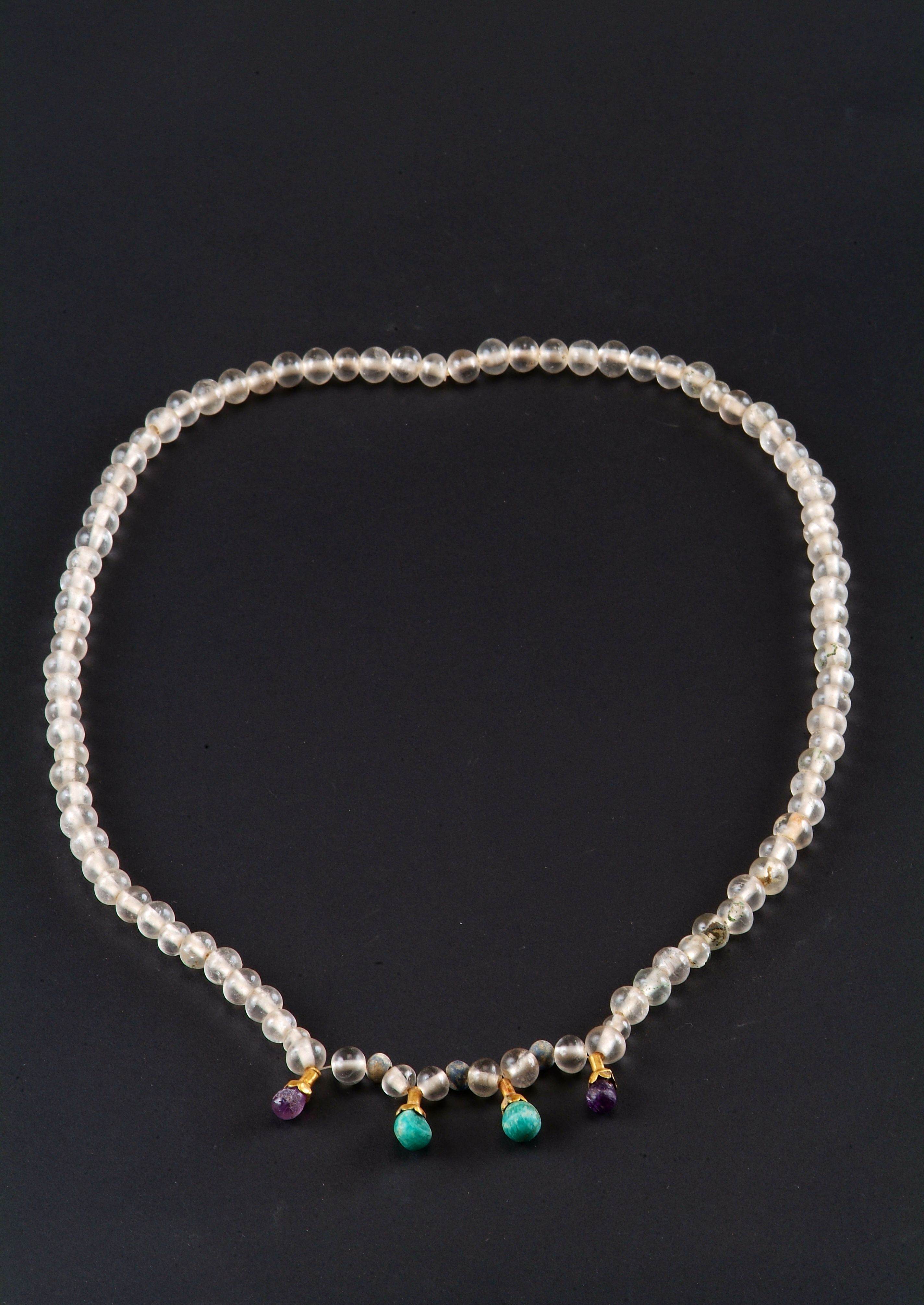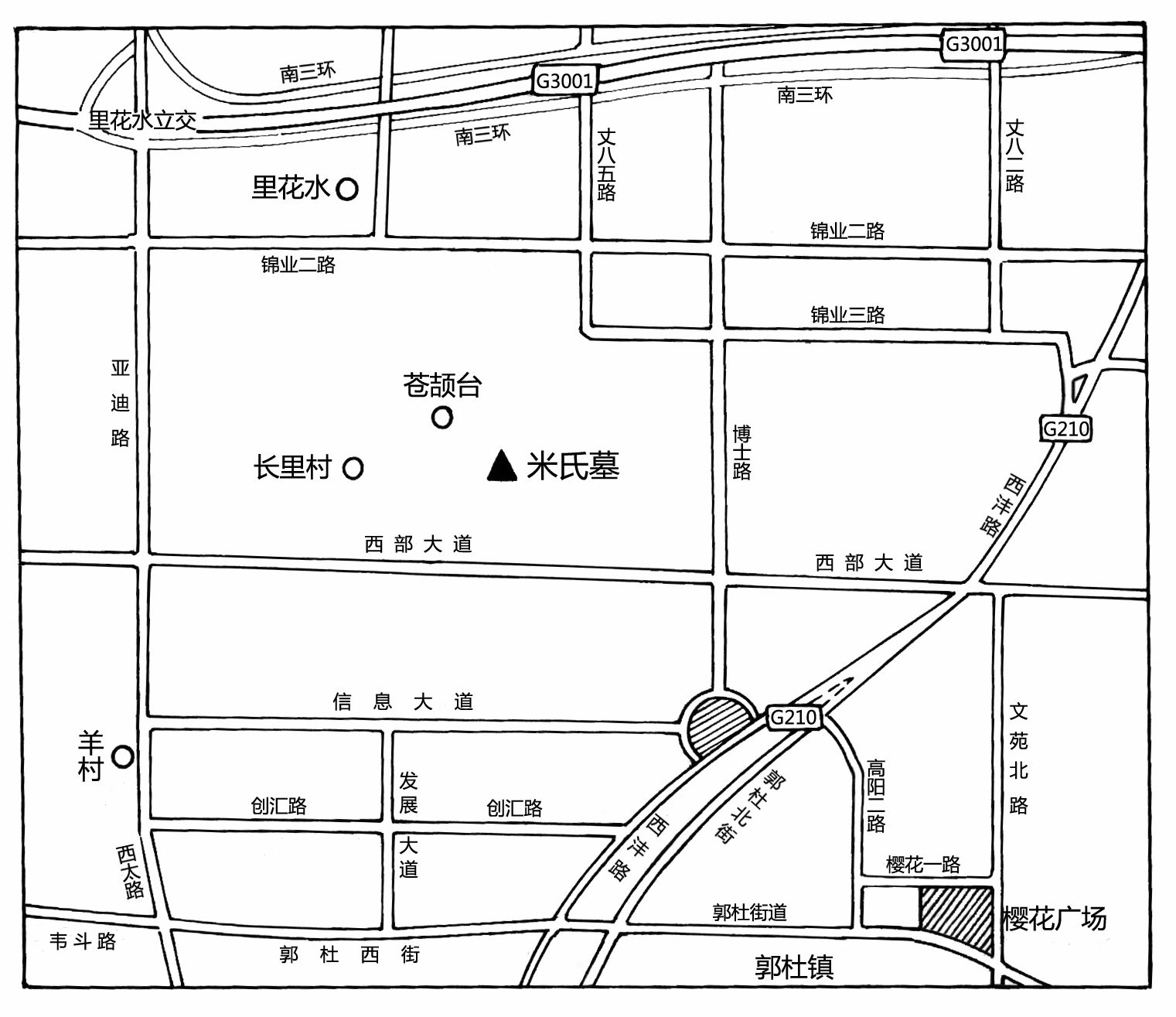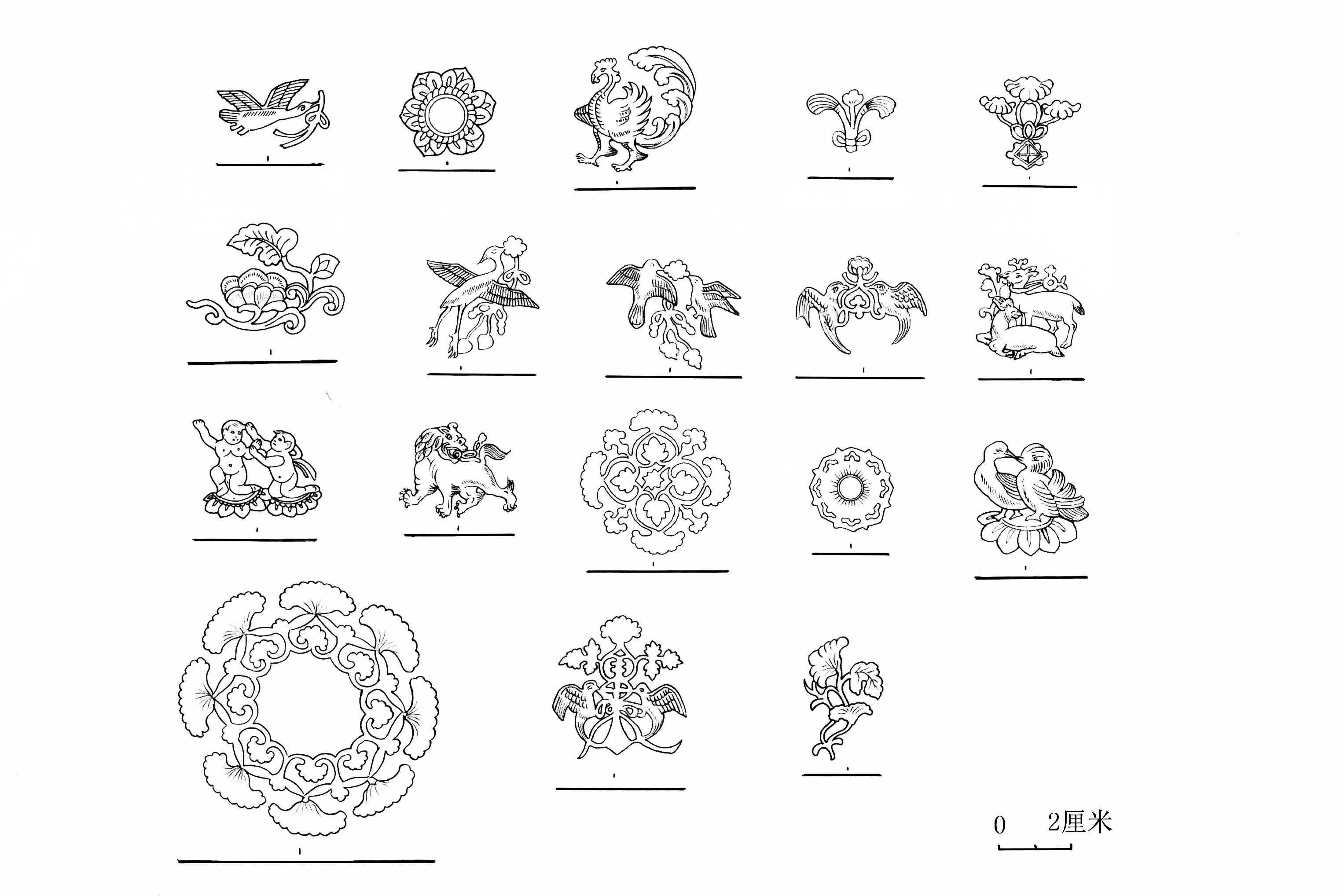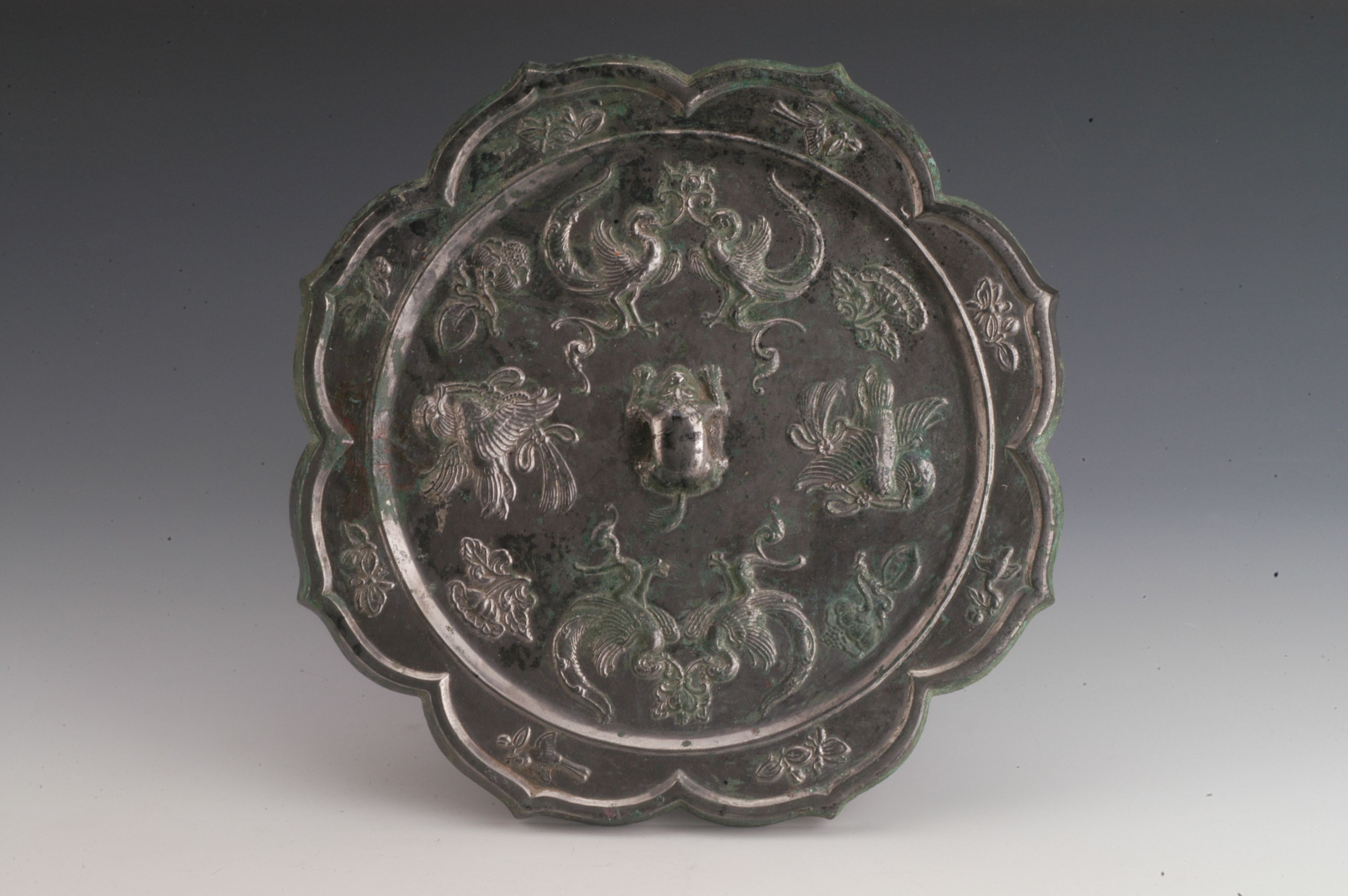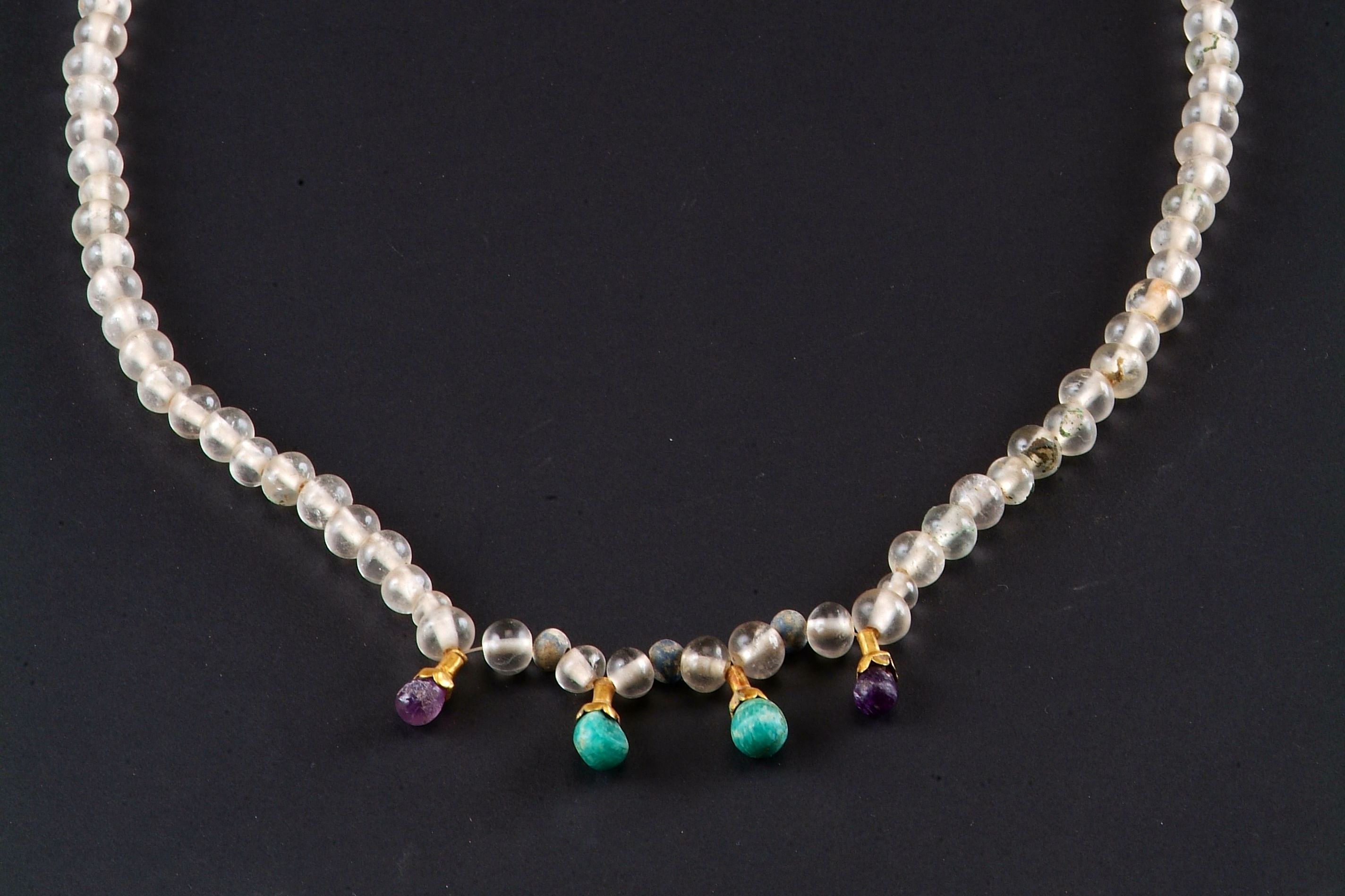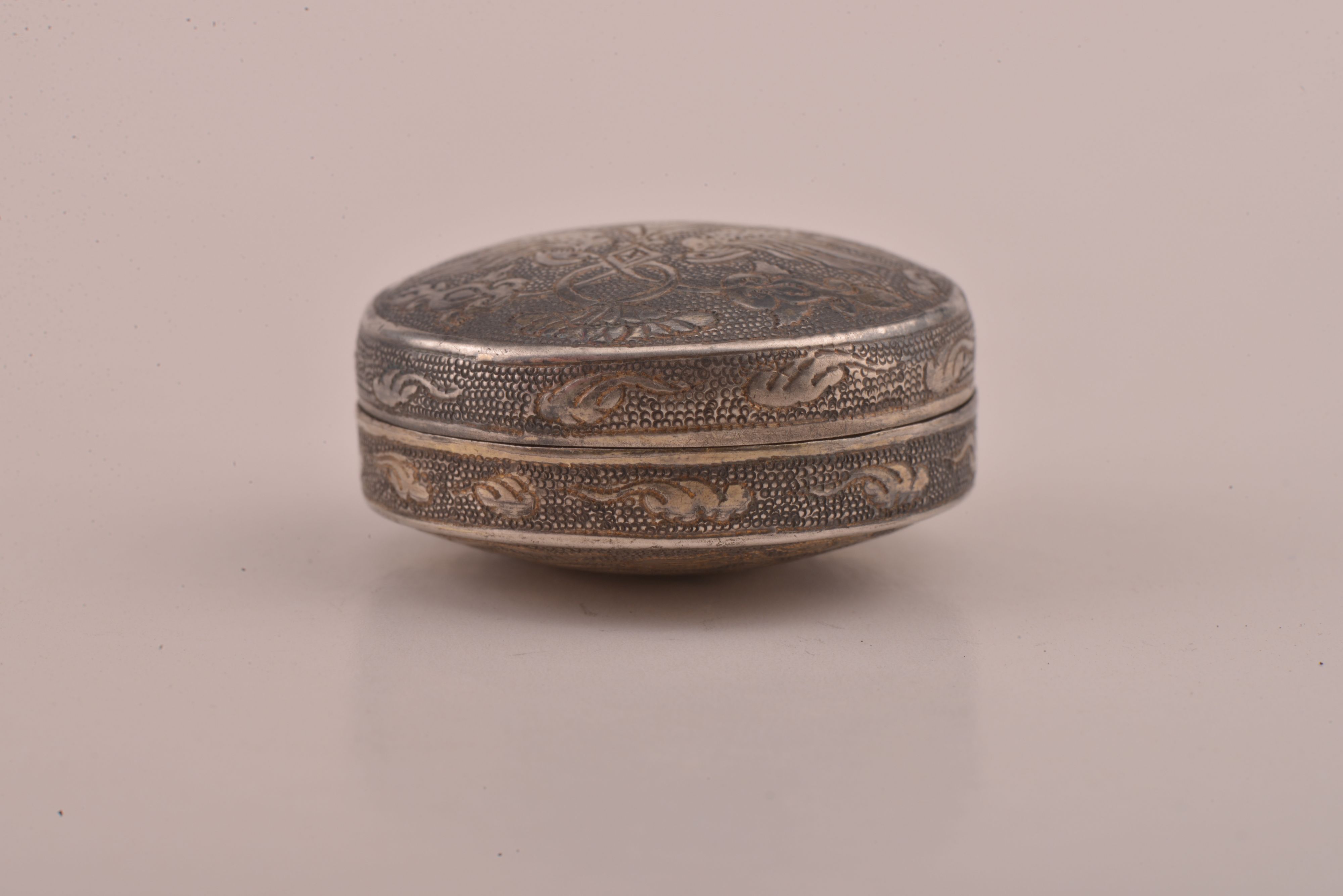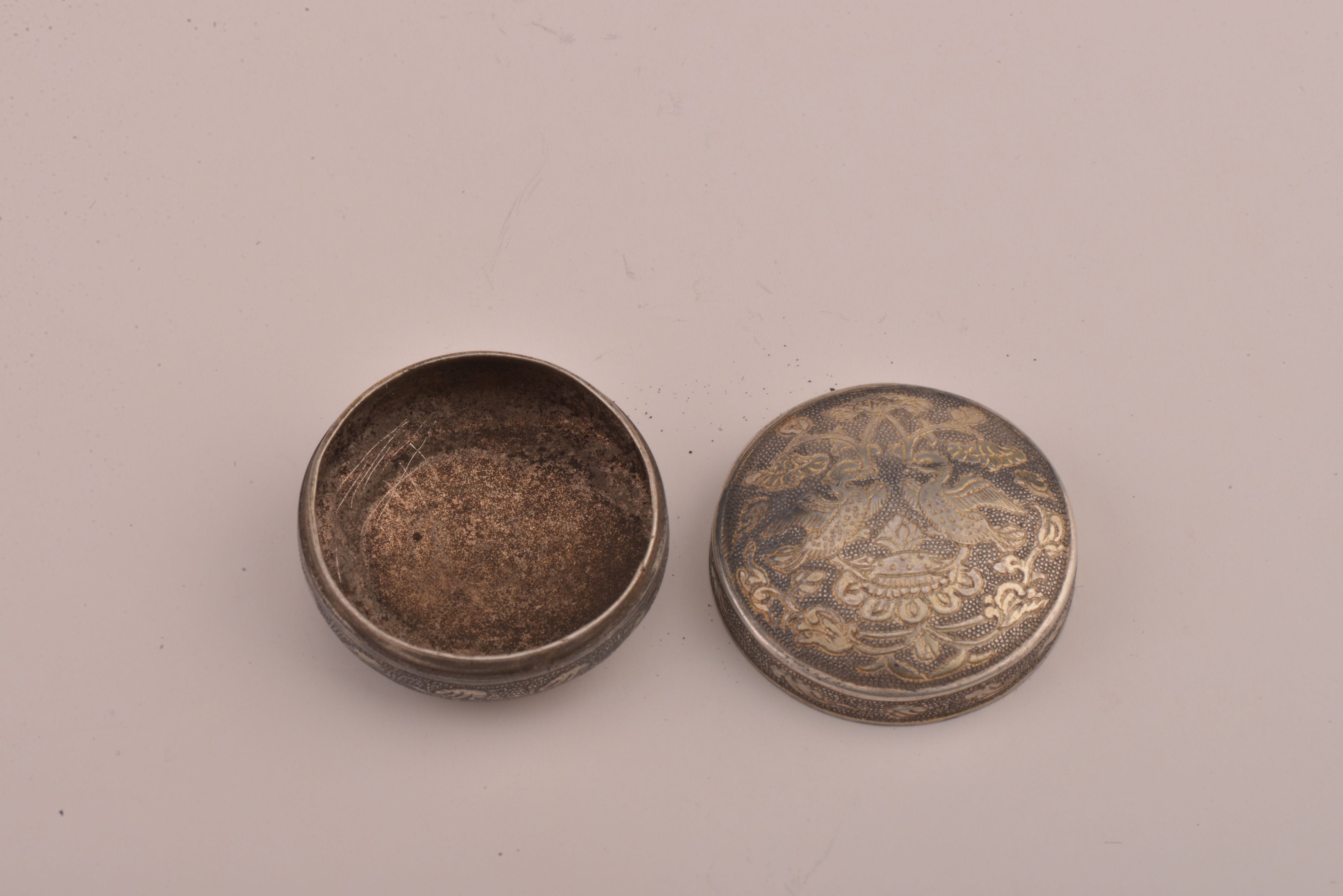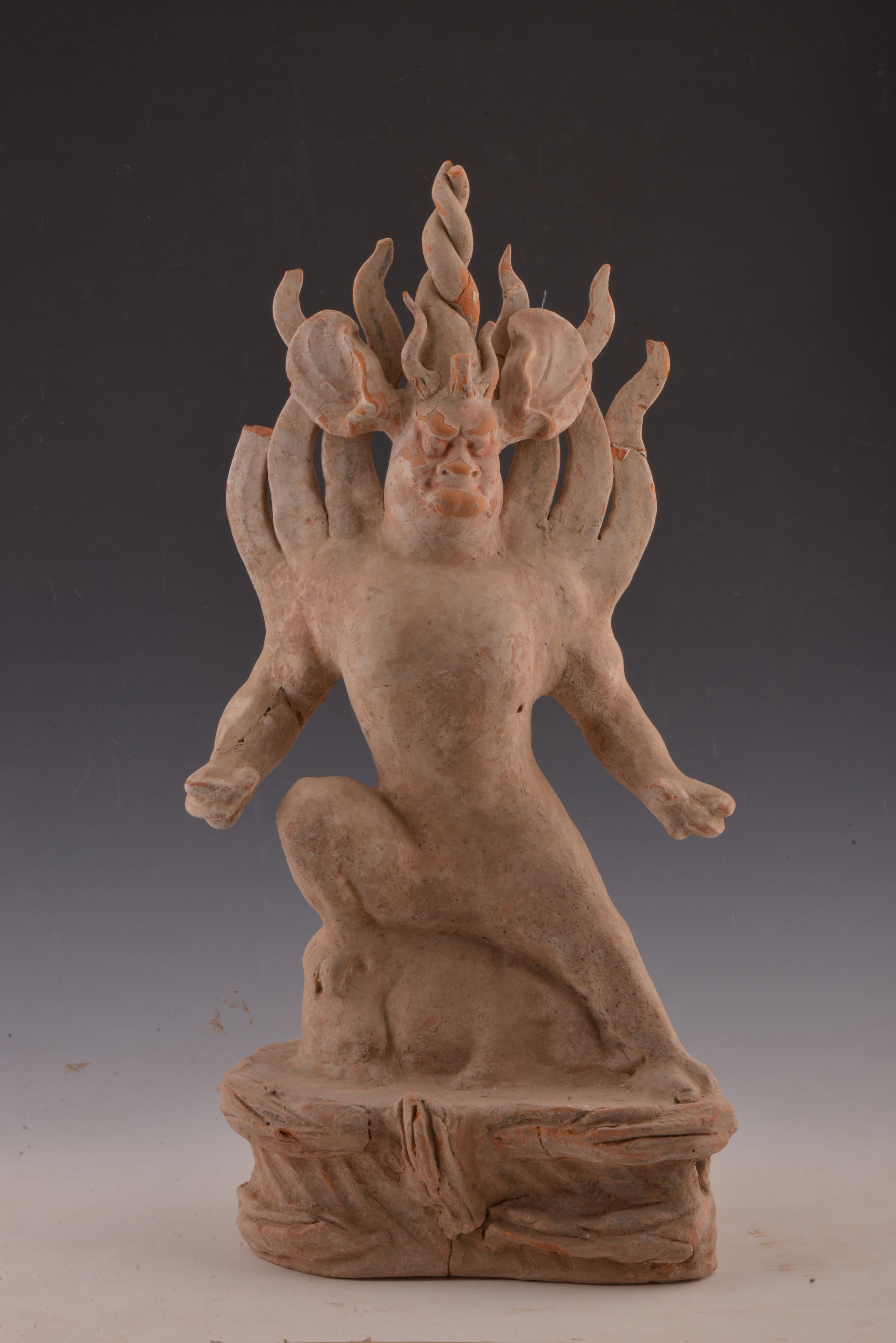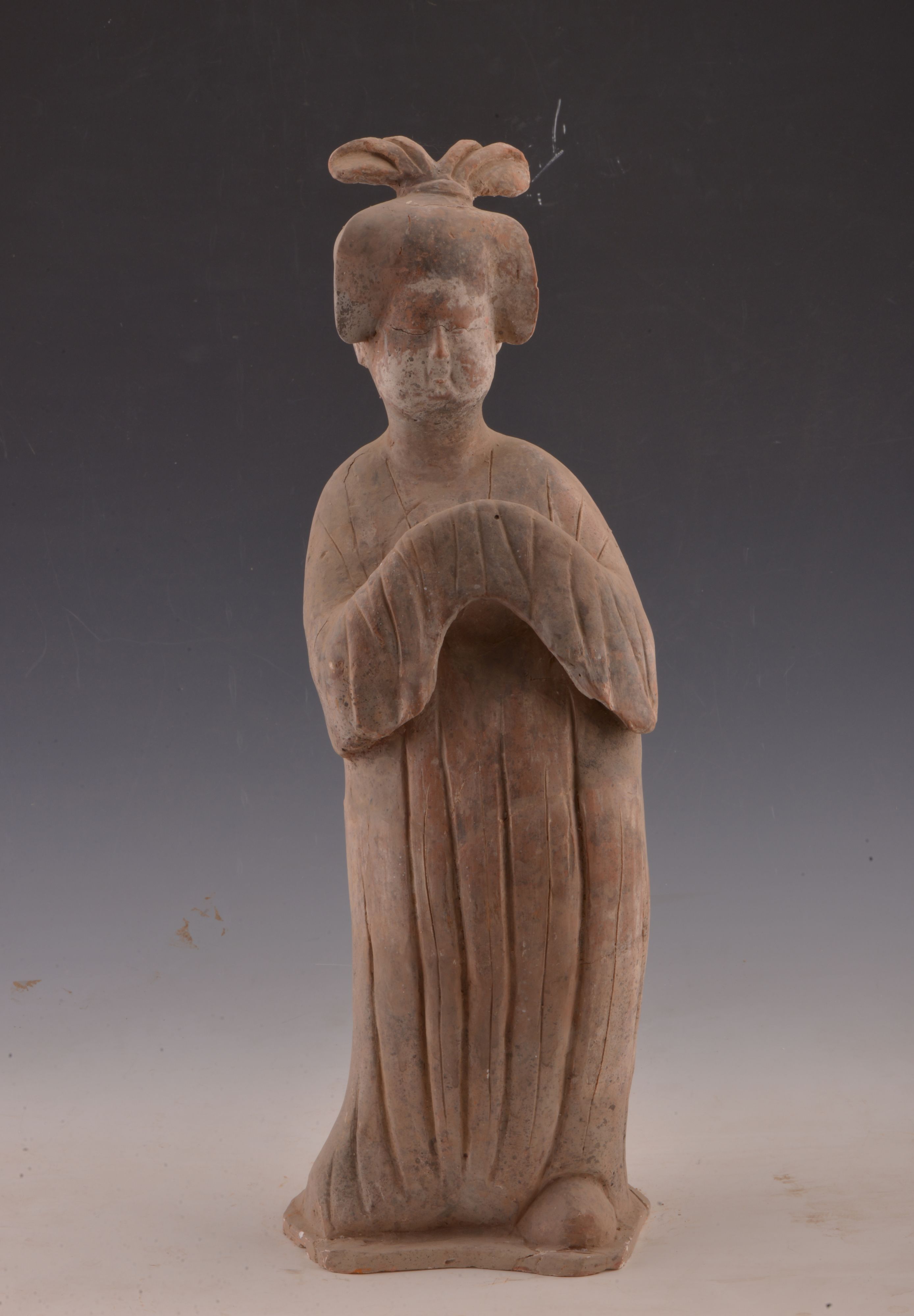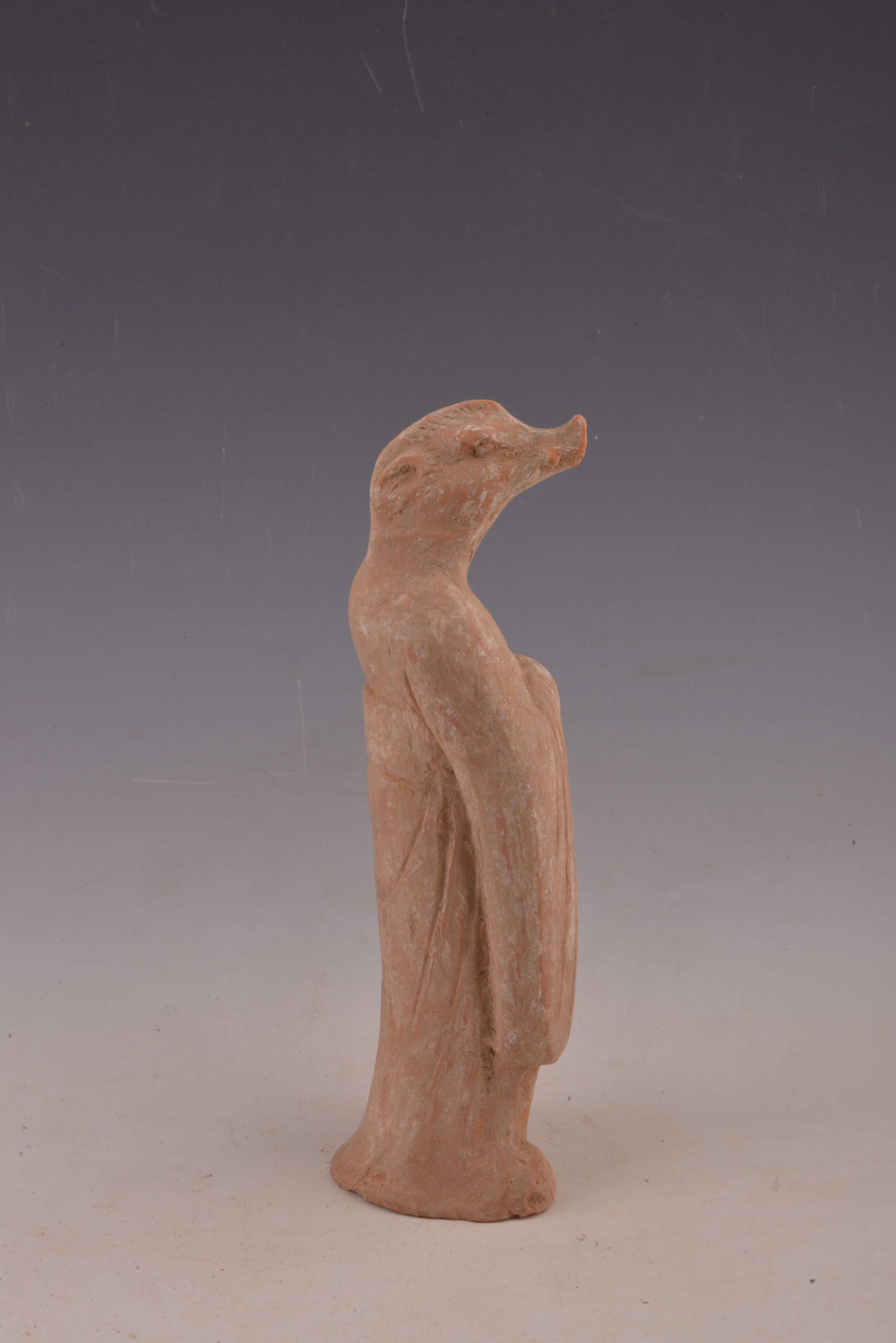DepthReading
Crystal necklace unearthed from a Tang Dynasty lady’s tomb
Necklaces and bracelets have been very popular since ancient times. How exquisite are Tang Dynasty jewelries? Recently, the Xi'an Institute of Archaeology announced the archaeological achievements of a Tang Dynasty lady’s tomb. It is of surprise that this tomb wasn't robbed. Excavated cultural relics are intact; especially a crystal necklace is particularly exquisite.
(Translated by IICC-X, Published on the Nomination Newsletter)
Surprise: the Tang Dynasty lady’s tomb was well preserved
In 2002, while Xi'an Municipal Institute of Archaeology and cultural relics protection was assisting the construction of apartment blocks in the southern suburbs, the Institute excavated in an emergency more than 40 tombs dating from the Northern Wei Dynasty to the Tang Dynasty, among which a Tang Dynasty tomb is the most precious as it luckily escaped the disturbance by grave robbers. The earthen cave tomb with inclined passageway has a slanted ramp and was built from mud. It consisted of a ramp, a tomb corridor and burial chambers. While the upper part is destroyed, the inside of the tomb has not been disturbed. Funerary objects were preserved intact. 34 sets of pottery, bronze and other miscellaneous objects along with 9 copper coins were found. These relics include commonly seen Tang Dynasty tomb beast, Celestial King figurines, lady figurines and male figurines. Quite valuable is a set of Chinese Zodiac figures, 7 of which are intact and 5 are missing their heads. They all have animal heads and human bodies, wear narrow-sleeved inner clothes and wide-sleeved, long outer robes with crossed collars. They wear a belt over the chest and their robes drape to the floor and hide their feet. The wide sleeves drop to the knee, their hands arch in front of the chest but are concealed by the sleeves, the feet are positioned one in front of the other in the ‘ren(人)’ shape. The most precious is the epitaph, the discovery of which reveals the identity of the tomb occupant.
Unveiling the mystery: the tomb occupant is conjectured to descend from Central Asia "米国 Mi State"
The epitaph cover bears an inscription in seal script "Tang deceased lady Mi epitaph". The inscription has 18 lines and 382 words altogether. The inscription shows the tomb occupant Lady Mi was the wife to Tang Fujun. The name of Fujun’s grandfather was unknown but he held positions of Senior Zuo Yu Qian Wei General of Tang, Vice-envoy of Hosi. His father’s name was also unknown but he served as Vice Xiao Wei Lang General. Both of them were military officers. Lady Mi married Fugong at 19, had 3 children and died at 60. Fugong had the civil position of 4th rank, and was buried in Tang Emperor Xuanzong reign Tianbao 14th year (755). In the epitaph Lady Mi was described as being ‘gentle, talented, thoughtful and elegant’. Her ladylike manners were highly praised.
There is no record of Fugong in the historical text. Mi is a rare surname. According to the historical text ‘Yuan He Surname Compilation’, Mi origins from the Mi State in the West region, as such it is highly likely that Lady Mi’s ancestors may have come from the Mi State in Central Asia (near present day Uzbekistan).
Rare: the crystal necklace is exceptionally exquisite after repair
"Crystal acquires the color of the object it mirrors, it is the encapsulation of clearness. To hold it towards the moon, and sorrowed like water." The famous Tang Dynasty poet Wei Yingwu in his "Ode to the essence of water", depicted the sparkling clearness of crystal, through which we can tell how endearing crystals were to the Tang Dynasty people. This is also verified in Lady Mi’s tomb. Archaeologists found the Lady Mi was buried wearing a crystal necklace over her neck. The string of the necklace was rotten, and crystal beads were scattered around her neck due to the long time. After sorting, archaeological experts found 92 crystal beads, 3 blue coloured beads, 4 gold buckles, 2 Amethyst Pendants and 2 turquoise pendants.
Crystal beads are of various sizes, but are all flat spheres. Holes were drilled from two ends to meet in the middle. One end of the pendants is smaller than the other end, for the smaller end to be embedded into the gold buckles, forming a pendant. After repair, this crystal necklace looks very beautiful and clear.
Although quite many crystal beads have been unearthed in China, such a complete crystal necklace is not often excavated. After restoration, the crystal necklace is so magnificent and elegant that it wouldn't be out of fashion even today.
In addition to the crystal necklace, female items such as a silver box were also unearthed. Precious artifacts include a uniquely designed Tang Luan bird holding ribbon in its beak mirror, whose exceptional size and quality makes it a treasure of Tang mirrors. The mirror is over 25 cm in diameter. It is quite heavy, well polished and delicately casted. It employed Ryoka motif, which was popular during the Tang Dynasty, and Luan bird holding ribbon in its beak as its design. The exact same design is found nowhere else. Either the size or the quality of this mirror would make it a treasure of Tang mirrors.
There is also a silver box with chiseled lotus and mandarin duck design. Although the box is rather small, chiseled pattern occupies the whole surface. The main motif is lotus, which symbolizes nobility and purity, and mandarin duck, which represents love. The delicate chiseling on the box and the beautiful meaning of the design make this box a rare precious cultural relics too.
A lacquer box is also worth mentioning. The wood of lacquer box had decayed into ashes, but in the clean-up process some gold Neolamarckia cadamba. Of various designs were found, such as peony flowers, Luan bird holding a ribbon in its beak, auspicious beast of holding flowers in the mouth and lotus boys. The designs are manifold and all highly realistic. It is conjectured that they should have been glued to the surface of the box. Such a sumptuous object is definitely not for any ordinary commoner to enjoy.
In summary, the funerary objects in Lady Mi’s tomb are well preserved. Many artifacts are treasures of Tang Dynasty cultural relics which represent the superb artistry of the Tang Dynasty craftsmanship and have very high artistic value. This, coupled with the fact that the tomb epitaph is available to give precise dating, makes these artifacts standard objects against which other items are dated. They are very valuable materials for the archaeological study of the Tang Dynasty.
Category: English
DepthReading
Key words:

